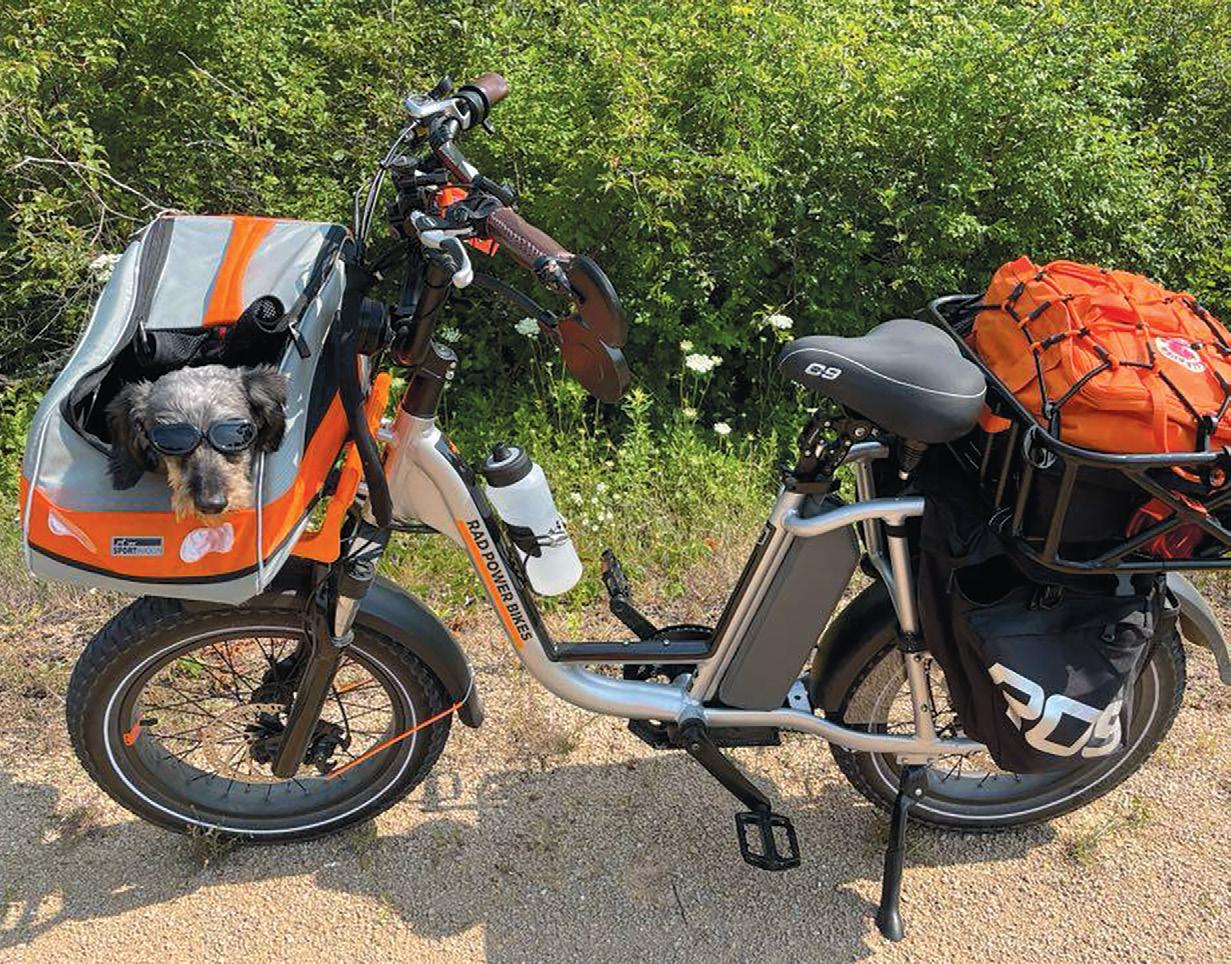
4 minute read
fit body
The Exercise Power of E-Bikes
GET A WORKOUT ON AN EASIER RIDE
Advertisement
by Sandra Yeyati
The familiar adage, “No pain, no gain,” doesn’t really apply to e-bikes. Although a pedal-assist electric bicycle is zippier and easier to ride than a conventional model, researchers are finding that as long as we’re pedaling, we’re still getting our heart pumping, building stamina and experiencing some of that cardio magic. That’s good news for those of us that like to work smarter, not harder.
What’s more, that battery-enabled oomph supplies riders with the enjoyment, motivation and self-confidence to venture out more frequently and for longer periods of time, give hills and inclines a try and even pedal to work for an active, eco-friendly commute. It’s a win-win-win.
In 2018, researchers at Brigham Young University (BYU), in Provo, Utah, sought to quantify just how good a workout was possible on an e-bike, and they discovered that the average heart rate was only 6.21 beats per minute lower than on a conventional cycle.
“The e-bike and conventional bike averages both fell within that 50 to 70 percent maximum-heart rate threshold which is indicative of moderate-intensity cardiovascular activity, so there seems to be a similar amount of benefit for heart health when riding an e-bike, despite the fact that the perceived exertion was significantly lower than on a conventional bike,” says Taylor Hoj, lead author of the study published in the journal JMIR Public Health and Surveillance.
The college-aged men and women that participated in the study rode the same 10-mile trail on each type of bike, so it was easy to compare how much faster the e-bikes were. Cyclists averaged 12 miles per hour (mph) on the conventional bike and 16 mph on the e-bike, reaching top speeds of 22 mph and 27 mph, respectively.
On average, the same route took 54 minutes to complete on the conventional bike and only 39 minutes on the e-bike—a 30 to 40 percent time savings. For people considering using an e-bike to commute to work, that reduction might make it easier to give it a shot.
Using questionnaires given before and after each ride, the BYU researchers found,

“In general, participants agreed that they could ride an e-bike on most days, in the cold, when they were tired or dressed in formal attire, while carrying groceries or books, or on hilly terrain,” says Hoj, a health equity epidemiologist at the Utah Department of Health and adjunct faculty member at the BYU College of Life Sciences.
Notably absent from the study were e-bikes with throttles, which with a twist of the handle or the push of a button, provide a boost even when the rider isn’t pedaling. These bikes would probably not provide the same level of exercise benefits.
In 2019, the same BYU researchers conducted a similar study with experienced mountain bikers, published in the JMIR Formative Research Journal. “Our results in that study supported the idea that using a pedal-assist electric mountain bike (EMTB) retained the cardiovascular benefit and that the participants overwhelmingly perceived the potential of EMTB use to be positive,” Hoj says. “Some of them said an EMTB could help get them out on the trails more or perhaps get them to ride longer and go further, and also would allow older, injured, disabled or less-fit riders to enjoy mountain biking on dirt trails, whereas maybe their age, injuries or fitness levels limited their capability on a conventional mountain bike.”
According to Hoj, e-bikes offer a great set of benefits for fitness buffs. “Even if you’re a very serious athlete and in training programs, there are days where maybe you’re recovering from a more intense ride and your muscles are really sore, but you still want to continue to train your heart and that aerobic side of things, and an e-bike could be a great use for a more laid back aerobic day while the legs are recovering,” he says. “And if someone is wanting to get into mountain biking but doesn’t feel like they have the fitness to get there or doesn’t know how to start, that pedal assist could remove that initial barrier.”
Ultimately, the decision to buy an e-bike—good ones start at $1,000—may come down to emotional considerations. “They’re a lot of fun to ride,” Hoj says.

Sandra Yeyati, J.D., a professional writer and editor, can be reached at SandraYeyati@ gmail.com. WOLF SPIRIT
• Art & Play Therapy • Sound Healing & Drumming • Hypnosis, Meditation & Energy Work • EMDR & Trauma Healing • Traditional & Alternative Modalities
Husky/Medicaid and Most Insurance Accepted • WolfSpiritWellness.org 203-263-3175 • 670 Main Street South, Suite B2, Woodbury, CT 06798
To be the father of a nation is a great honor, but to be the father of a family is a greater joy.
~Nelson Mandela








